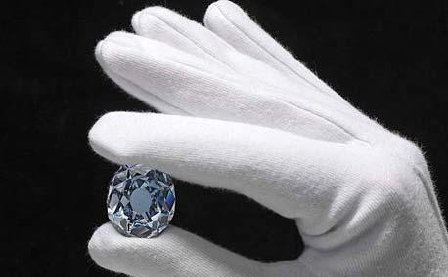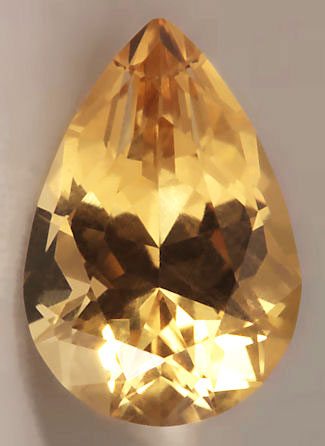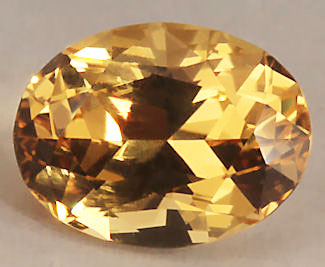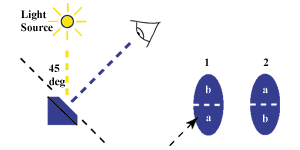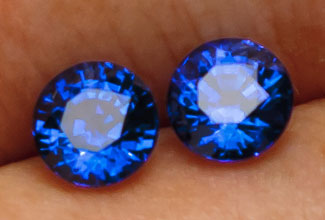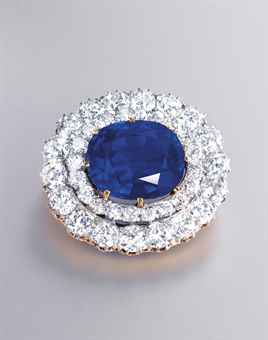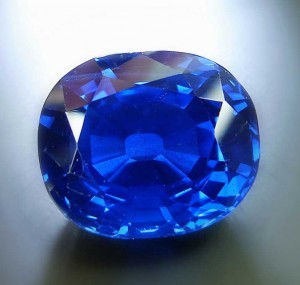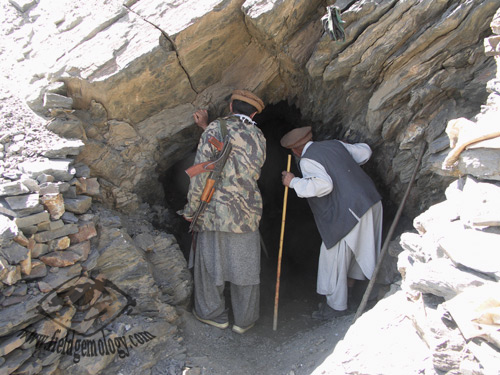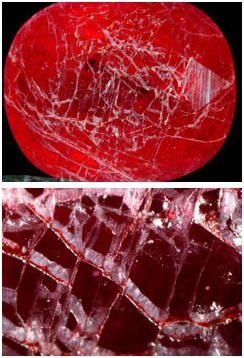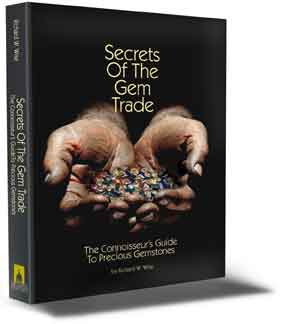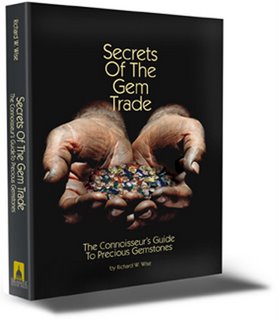Rocky Road II; Grading The Colorful
By Richard W. Wise, G.G.
©2007
Mirror, mirror, on the wall, who will be the biggest of them all? An Interview with Michael Haynes
After several near misses last Saturday I spent a bit of quality phone time with Michael Haynes, President of Collector’s Universe (CU). First a little background: You will recall from Part I that CU has acquired American Gemological Laboratory (AGL) the only major gem laboratory that quality grades colorful gemstones. The acquisition that took place in early 2006, with a 3.5 Million upfront payment to AGL President C. R. Beasley with an additional 3.5 million payable in five years.
Collectors Universe is a public company traded on NASDAQ with a market capitalization of 120 million dollars. The company bills itself as “the leading provider of value added authentication and grading services of high-value assets”. According to Haynes; last year CU certified 1.8 billion dollars worth of collectables including 65% of all stamps certifed, 85% of sports cards and perhaps 45% of all coins.
AGL is CU’s third acquisition on the road towards its publicly stated objective of becoming the major purveyor of gemstone quality reports “maybe not tomorrow, or next year, but within the foreseeable future. As part of its strategy CU had previously acquired GCAL a diamond grading laboratory and Gemprint the company that has patented a method of taking an identifiable “fingerprint” of a cut diamond.
Michael Haynes is a passionate pitchman. He sees CU’s coming dominance of the certification business as a win-win for everyone. Why he asks isn’t the fine gemstone business experiencing similar growth levels as other luxury products? According to CU’s president, it’s a matter of consumer confidence or the lack thereof. He contrasts the experience of buying a Hermes scarf with that of buying a ruby necklace. You go to a Hermes store. There is no question of authenticity or value; it is only a question of price. You go to the jewelry store and you enter a world of doubt. Is it real? What is it really worth? “Money”, says Haynes, “travels the path of least resistance.” Buying an expensive piece of jewelry, all you have to rely on is the seller and he is after all the seller. Independent third party certification by a publicly traded company will end the doubt and level the playing field, Haynes puts it succinctly: “remove doubt, increase sales”.
As any professional will attest, much of what Haynes says is spot on. Consumer doubt is a component of a large majority of missed sales opportunities particularly high-end sales. Doubt coupled with professional ignorance and competitive low-balling have made gem and jewelry selling a competitive mine field (read: my blog post: Getting an Appraisal; Some Do’s and Don’ts.)
Next I asked Haynes how he foresees CU succeeding where so many have failed? “By establishing an promoting a consistent standard.”
How about competition from GIA? Haynes barely skips a beat. “That’s a question”, he suggests, “you should be asking GIA”. With CU’s triumvirate of acquisitions Haynes appears confident that CU has covered all the bases. If the Gemological Institute of America wishes to compete in colored stone grading game, it is GIA that will be playing catch-up.
Laboratory One-upmanship:
At the season opener, Tucson 07, CU will throw out the first ball of the season. Its AGL subsidiary will announce a plan to offer a range of gem certificates. From being one of the most expensive labs, AGL is about to become the least expensive offering a range of modestly priced grading reports. In a separate conversation last week, AGL President Cap Beasley outlined the new program. The Lab will offer certification on a series of levels called Fast Track. For $25, Fast Track I will offer a credit card sized report providing just authentication and enhancement. Fast Track II will add the 4 C’s for $50 and for $75 Fast Track Premier will add type as in Burma-type, Paraiba-type, etc.
Collectors Universe is aiming at the consumer. The aim is to produce a document that is easily understood by the retail buyer. Perhaps this new format will accomplish that. AGL’s current offerings are not all that easy to understand. Though in recent years the lab has added a Total Quality Integration Rating (TQIR) to summarize all of the various grading factors and give the gem an overall quality grade.
Book Review
The Sancy Blood Diamond
In this historical potboiler, author Susan Ronald traces the history of the Sancy Diamond from the mines of Golconda to its current tranquil resting place in The Louvre.  As the largest and most famous diamond in Europe from the Fourteenth through the Seventeenth Century, The Sancy had many admirers and several owners; from Charles the Bold through Napoleon, kings, queens, cardinals and dukes, some of them major players on the stage of European history.
As the largest and most famous diamond in Europe from the Fourteenth through the Seventeenth Century, The Sancy had many admirers and several owners; from Charles the Bold through Napoleon, kings, queens, cardinals and dukes, some of them major players on the stage of European history.
Ronald does more; she is a knowledgeable political-historian and along the way she weaves the Sancy’s chronology into to woof and weft of European political history.
As Ronald shows, The Sancy and by extension other famous gems did more than add luster to the crowns of European Monarchs. Goldsmiths were Europe’s first bankers. It should come as no surprise, therefore, that long before the present conflicts in Africa, large and famous gems provided the bloody collateral of choice, pledged by Europe’s crowned heads to the financiers who bankrolled Europe’s major conflicts.
Ronald’s account is authoritative, fast paced and reads like a Machiavellian analysis of history. From the killing fields of Nancy, to Charles I’s beheading, to the court of the Sun King, Ronald shows how sex, power and greed as represented by The Sancy, fueled the politics of Europe. The book was published in 1995, don’t know how I missed it. The book is particularly relevant given the present interest in conflict diamonds. Highly recommended. For more on the stone and the author: www.thesancydiamond.com
Ronald, Susan, The Sancy Blood Diamond, Wiley & Sons, New York, (hardcover) $27.95, $18.45 on Amazon.
Into Africa:
For the first time in twenty years I will miss the Tucson Gem Shows. I will be in Brazil and cruising the coast of West, South and East Africa until mid-February. Meanwhile the contest goes on. (see the previous post, Rocky Road I) Guess the value of the French Blue diamond in 1698 and win a free copy of my book, Secrets Of The Gem Trade, The Connoisseur’s Guide To Precious Gemstones. The Secrets website will also not be functioning for orders. If you need it right away order it on www.Amazon.com. (See below)
Interested in reading more about real life adventures in the gem trade?  Follow me on gem buying adventures in the exotic entrepots of Burma and East Africa. Visit the gem fields of Austrailia and Brazil. 120 photographs including some of the world’s most famous gems. Consider my book: Secrets Of The Gem Trade, The Connoisseur’s Guide To Precious Gemstones. Now only $26.95. You can read a couple of chapters and order online: www.secretsofthegemtrade.com.
Follow me on gem buying adventures in the exotic entrepots of Burma and East Africa. Visit the gem fields of Austrailia and Brazil. 120 photographs including some of the world’s most famous gems. Consider my book: Secrets Of The Gem Trade, The Connoisseur’s Guide To Precious Gemstones. Now only $26.95. You can read a couple of chapters and order online: www.secretsofthegemtrade.com.
Buy it on Amazon: www.amazon.com
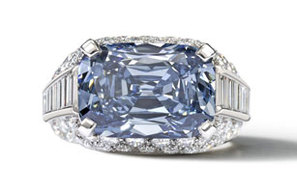 Fancy diamonds are back in the news, another auction record broken This time its blues. At Bonhams of London, a 5.30-carat fancy deep-blue diamond set a world auction record for price per carat when it sold for approximately $7.3 million, or $1.8 million per carat bettering the previous record of 1.68 million per carat. I recall a 5+ carat Fancy Deep blue emerald cut I viewed at the Las Vegas show some five years ago with an askiing price of 1 million per carat, quite a nice appreciation.
Fancy diamonds are back in the news, another auction record broken This time its blues. At Bonhams of London, a 5.30-carat fancy deep-blue diamond set a world auction record for price per carat when it sold for approximately $7.3 million, or $1.8 million per carat bettering the previous record of 1.68 million per carat. I recall a 5+ carat Fancy Deep blue emerald cut I viewed at the Las Vegas show some five years ago with an askiing price of 1 million per carat, quite a nice appreciation.
